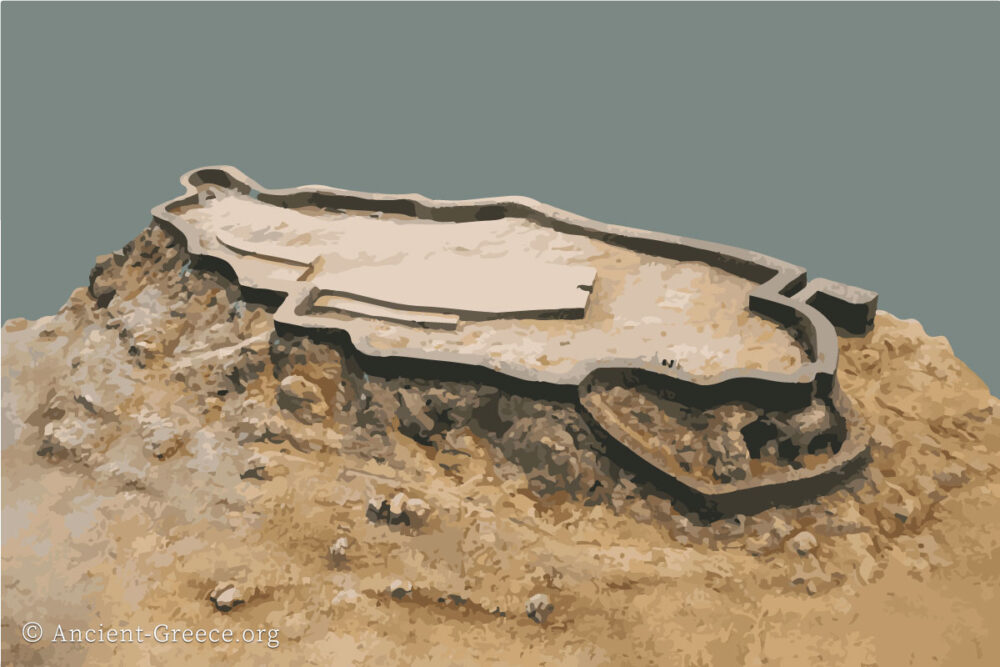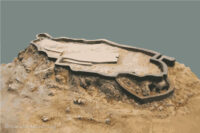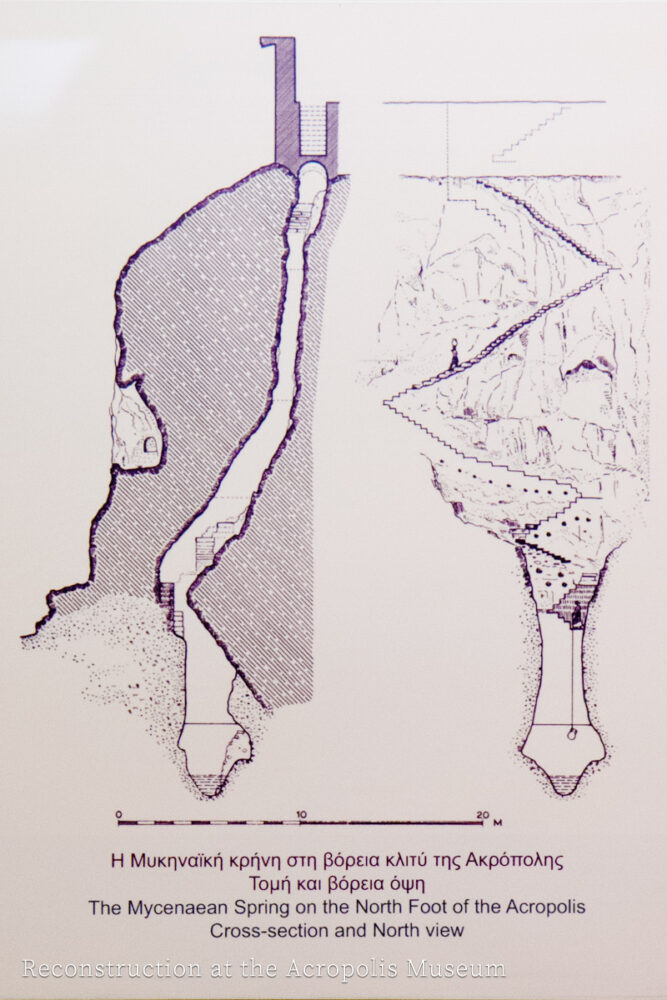
On this page:
Stone Age
The chronicle of the Acropolis of Athens is lost in prehistory, to a time even before the plane of Attica began to be cultivated.
While the area around Attica was inhabited during the Upper Paleolithic period (30000 – 10000 BCE), archaeological evidence suggests that the small caves around the Acropolis rock and the Klepsythra spring were in use during the Neolithic Period (3000-2800 BCE).
Bronze Age

The Mycenaean civilization established many important centers, one of which was Athens. During this time, small towns developed around a fortified citadel where the king resided and controlled the surrounding area.
The first inhabitants we can trace to the Acropolis of Athens were Mycenaean Kings who fortified the rock with massive eight-meter tall walls, and built their palaces there in the 14th century BCE (reconstruction drawing).
Very little remains from these buildings today, but the most obvious evidence of this era is still visible at the southwest end of the Acropolis, right behind the later Temple of Athena Nike, next to the Propylaia, in the form of a cyclopean wall that was built as part of the fortifications.
According to Dontas, Mycenaean kings built a palace at the north end of the rock “where the Archaic temple of Athena was later built, or a little further east on the summit of the hill” (The Acropolis and its Museum, 6).
Besides a fort and a place of royal residence, the Acropolis functioned as a place of worship for the Goddess of fertility and nature, and for her companion male god Erechtheus.

Just like Mycenae and Tyrins, the Acropolis of Athens had its own underground water supply in the form of a deep well, dug at the north end of the rock, which could be used by the defenders during a siege.
This History of the Acropolis is divided into the following chapters:
- Introduction
- Prehistoric Acropolis
- Archaic Acropolis
- Classical Acropolis
- Post-Classical Acropolis
- Modern Acropolis
Related Pages

